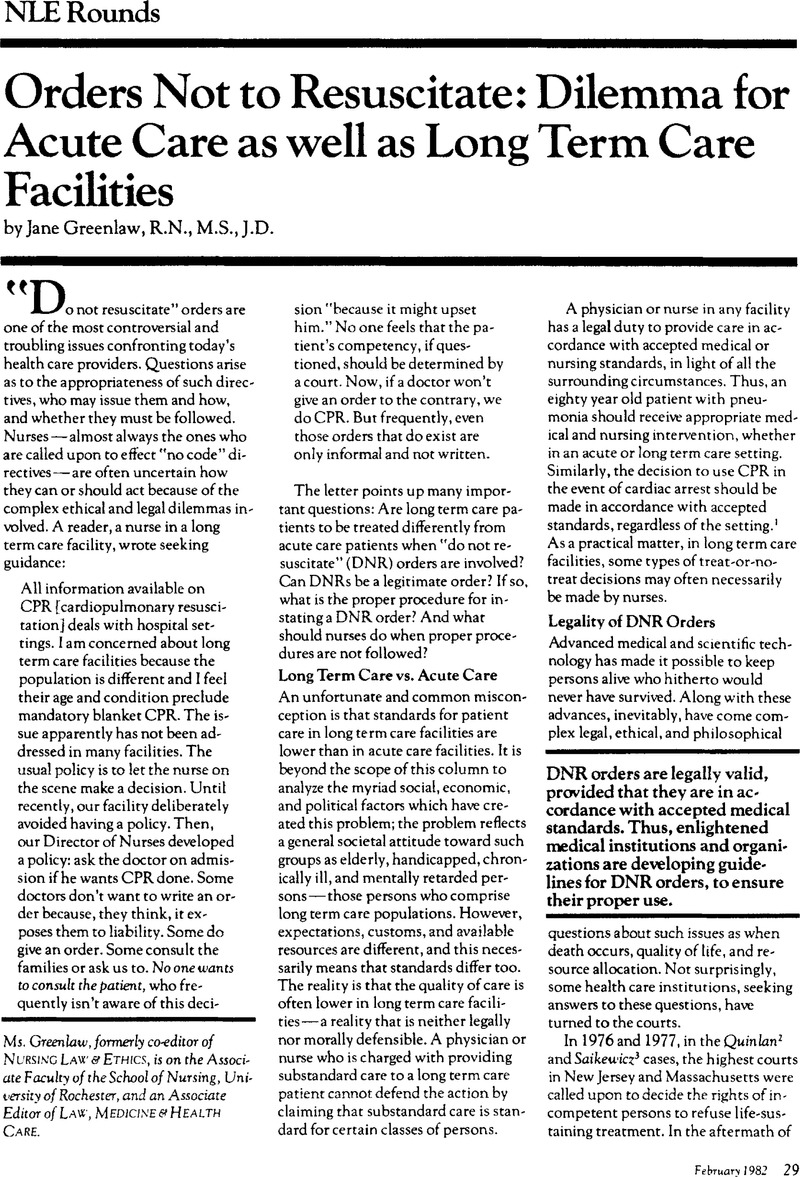Crossref Citations
This article has been cited by the following publications. This list is generated based on data provided by Crossref.
Cohn, Sarah D.
1983.
The Living Will from the Nurse's Perspective.
Law, Medicine and Health Care,
Vol. 11,
Issue. 3,
p.
121.
Miles, Steven H.
and
Ryden, Muriel B.
1985.
Limited‐Treatment Policies in Long‐Term Care Facilities.
Journal of the American Geriatrics Society,
Vol. 33,
Issue. 10,
p.
707.
Levinson, Wendy
Shepard, Mary A.
Dunn, Patrick M.
and
Parker, Dorothy F.
1987.
Cardiopulmonary Resuscitation in Long‐term Care Facilities: A Survey of Do‐not‐resuscitate Orders in Nursing Homes.
Journal of the American Geriatrics Society,
Vol. 35,
Issue. 12,
p.
1059.
Miles, Steven H.
Gomez, Carlos F.
Zweibel, Nancy R.
and
Cassel, Christine K.
1988.
Nursing Home Policies Addressing the Use or Withdrawal of Life-Sustaining Medical Treatments.
Clinics in Geriatric Medicine,
Vol. 4,
Issue. 3,
p.
681.
Castle, Nicholas G.
1998.
Physical Restraints in Nursing Homes: A Review of the Literature Since the Nursing Home Reform Act of 1987.
Medical Care Research and Review,
Vol. 55,
Issue. 2,
p.
139.





